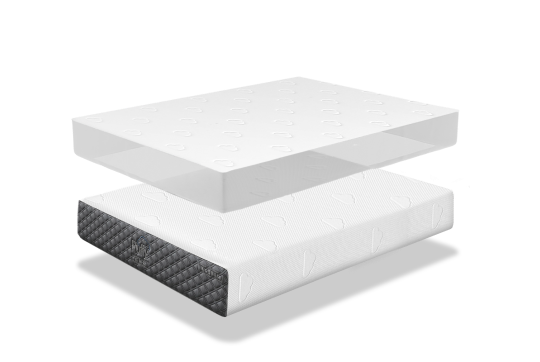Discovering mold on your mattress protector can be a disturbing sight. Not only does it pose health risks, but it also indicates underlying issues with moisture and ventilation in your sleeping environment.
This article explores the causes of mold on mattress protectors, how to effectively deal with it, and the role of high-quality bedding solutions in preventing such issues.
Mold on Mattress Protector
Mold growth on mattress protectors often results from a combination of moisture, warmth, and poor air circulation. Mattress protectors, especially waterproof ones, can trap heat and sweat against the mattress surface, creating an ideal environment for mold and mildew to thrive. Here’s a closer look at why mold appears on mattress protectors and how to address it:
- Causes: The primary cause of mold growth is moisture trapped between the mattress and its protector. This can be due to sweating during sleep, high humidity levels in the bedroom, liquid spills, or even the ambient moisture from the air in damp environments.
- Prevention: Regularly airing out the mattress protector and ensuring the bedroom is well-ventilated can significantly reduce the risk of mold growth. Using a dehumidifier in humid climates, ensuring spills are cleaned up immediately, and opting for breathable mattress protector materials can also help prevent mold.
- Removal: If mold has already developed, removing the protector and washing it according to the manufacturer’s instructions is crucial. In some cases, a mixture of water and white vinegar can help kill the mold. However, if the mold penetration is deep, replacing the mattress protector might be the safest option.
Black Mold on Mattress Protector
Black mold, or Stachybotrys chartarum, is particularly concerning due to its potential to release mycotoxins, which can be harmful to human health. Its presence on a mattress protector indicates a severe moisture problem and requires immediate action.
- Identification: Black mold can be identified by its characteristic dark green or black color and musty smell. It typically appears in patches and can spread rapidly if not addressed.
- Health Risks: Exposure to black mold spores can lead to respiratory issues, allergic reactions, headaches, fatigue, and in severe cases, neurological problems or immune system suppression.
- Remediation: For black mold, the safest approach is often to discard the affected mattress protector and thoroughly clean the mattress surface beneath. It’s also crucial to identify and rectify the source of moisture to prevent recurrence. In cases of widespread mold, professional mold remediation may be necessary.
Interested in how Puffy stacks up against other brands? Check out our mattress comparisons: Puffy vs Purple, Puffy vs Nectar, Puffy vs Casper, Puffy vs Leesa, Puffy vs Saatva, Puffy vs DreamCloud, and Puffy vs Tuft and Needle.
Prevention Strategies
Keeping your mattress protector mold-free involves regular care and the right environmental conditions.
- Maintain Low Humidity: Use dehumidifiers or air conditioners to keep humidity levels low.
- Ensure Proper Ventilation: Regularly air out your mattress and bedroom to reduce moisture buildup.
- Choose the Right Protector: Opt for breathable, moisture-wicking materials that reduce the risk of mold.
Using a Puffy Lux Mattress with its breathable design can significantly reduce the likelihood of mold growth on your mattress protector by ensuring better air circulation and moisture management.
Check out Puffy mattress reviews from real customers and see how we compare with other brands.
Cleaning Mold off Mattress Protectors
If you find mold on your mattress protector, immediate action is required to clean and salvage it.
- Remove the Protector: Carefully remove the protector to avoid spreading spores.
- Wash Thoroughly: Use hot water and a disinfectant or mold-killing laundry detergent.
- Dry Completely: Ensure the protector is completely dry before placing it back on the mattress.
Pairing a Puffy Lux Mattress with a high-quality mattress protector designed to prevent mold ensures a healthier sleep environment, combining comfort with effective moisture and mold management.
Use our store locator to find the closest furniture or mattress store near you and feel the cloudlike comfort of our Puffy Mattress in person.
Conclusion
Mold on a mattress protector is a clear sign that your sleeping environment needs attention. By understanding the causes and implementing effective prevention and cleaning strategies, you can protect your health and extend the life of your mattress and its accessories.
Opting for quality bedding solutions and specially designed mattress protectors can make a significant difference in maintaining a mold-free, healthy sleeping space.

- Oeko-Tex® Standard 100 certified.
- Hypoallergenic.
- Lifetime warranty.
- 101-night sleep trial.
- Free shipping and returns.












